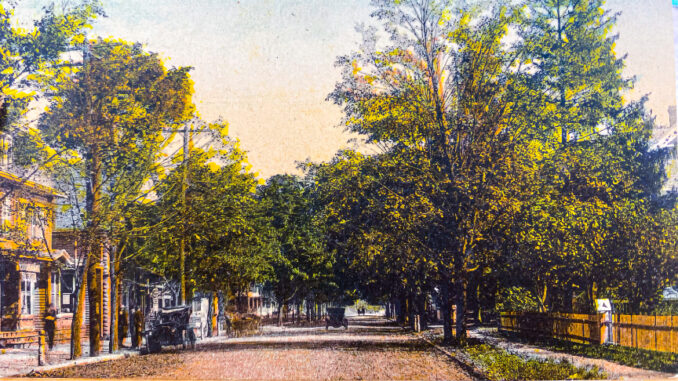
WESTWOOD—The viewer was looking up Main Street from Railroad Avenue. Nowadays, using the modern names, we would say it is looking up Westwood Avenue from Broadway.
This was an era when automobiles were still relatively new on the scene, and the tree-lined avenue saw traffic from both tires and horses’ hooves.
Cars were an expensive luxury back then. A classified advertisement from June 1912 shows a man from Westwood trying to sell a Rambler Touring Car he had bought less than a year earlier. He states in the ad that he paid $2,800 for the car. Adjusting for inflation, that’s $90,000 in today’s money.
On the left side of the street we see an early auto along with a horse-drawn wagon parked a couple doors down. There were posts along the curb line for hitching horses, but it would be many years before parking spaces for cars were drawn on the road.
The world’s first parking meter was installed in Oklahoma City in 1935; a decade later these devices made their appearance in Westwood. When the borough installed its first parking meters in the downtown area in the 1940s, an hour of parking cost a nickel.
The coming of the railroad in 1870 had triggered a massive transformation in the downtown streetscape. When the first train pulled into Westwood, just 25 houses stood in the community. By 1910 there were 1,870 people living in town. Accordingly, there was a call for more stores and services. The commercial district, which began with a couple of stores at Broadway and Westwood Avenue, spread toward Kinderkamack Road during the early 20th century.
Along the way, commercial buildings replaced the residential homes that once stood along the avenue.
— Kristin Beuscher is president of the Pascack Historical Society
